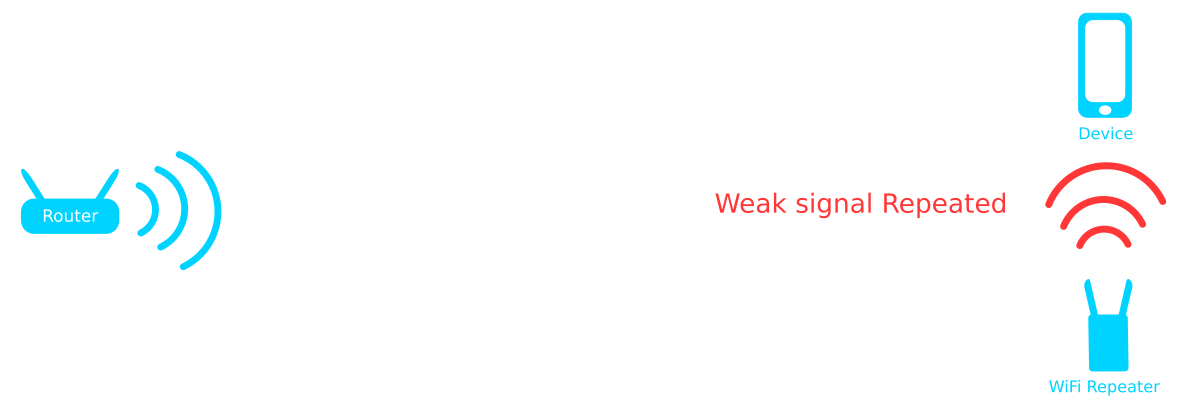|
It's frustrating it's infuriating, it's a problem no one seems to be able to fix. Whether your working from home, playing your Playstation or trying to stream a movie, slow internet is just the worst! In this guide we take a look at some of the potential reasons why your internet is slow and what you can do to try and fix it.
To try and troubleshoot the issue a little before we begin, we have broken down the issue. Click the title to be taken to the relevant part of the article, or continue reading. - Click here if your Internet is always slow -- Click here if your internet is sometimes slow -- Click here if your Internet is slow in some parts of your house-My Internet is always slow
This could be the worse case scenario, if your internet is always slow, and slow on all your devices, then it is likely that the internet connection, provided by your Internet Service Provider (BT, Virgin, Vodafone etc.), isn't very quick.
The best way to test this, is to stand a close as you possibly can to your Router ( the box given to you by your Internet Service Provider), ensure you are connected to the WiFi and then run a Speed Test. If your download speed is below around 54Mbps then your connection is slower than the average UK, anything under 20Mbps is slow and under 10Mbps will be painful for anything other than browsing.
If your connection is fast then it may be that the Internet is just slow in certain parts of your home. Click here to find out solutions for that issue.
If your connection is slow, there may be a few reasons, keep reading to find out more: 3 reasons why your Internet is always slow1. Your internet connection is still ADSL2+
It may be that you are still on a connection type known as ADSL2+, if this is the case you can almost certainly upgrade to a service known as Fibre to the Cabinet (FTTC) which should be much quicker. FTTC uses Fibre Optic Cabling which is much quicker; FTTC is available to 96% of the UK. The upgrade will be relatively simple, a quick call to your provider, followed by a BT Openreach engineer making a change in the local BT Cabinet, you may also be sent a new router.
We would strongly recommended shopping around a bit before you accept the price given to you by your provider, you should not be paying more than around £25-30 per month for a domestic FTTC broadband connection. 2. Your router is old and needs upgrading
If you have been with your Internet Service Provider for a long time, the chances are you haven't been offered a router upgrade. Most routers provided by internet service providers are cheap and not particularly good. Providers normally upgrade their router model every couple of years, so it would be worth asking for an upgrade if you think you've had yours for a while. Alternatively you can also purchase your own router if you wish and use that instead. This is an especially good option if you live in a busy household.
3. Your property is in a remote location
Your internet speed is directly linked to your proximity to your local BT cabinet (green box) Unfortunately in most cases remote properties are some distance from their local cabinet so if you are in rural area you will undoubtedly have slower internet than properties in a built up area. Remember remote is relative, you may just be a few miles from a major town but be 'remote' in broadband terms.
This is a frustrating situation but there are a few options to resolve this. Keep reading to find out more. Solutions for a slow Internet Connectiona) Use a 4G router
A 4G router uses mobile phone signal to provide an internet connection. You'll need to purchase a sim card and a 4G router but the set-up is relatively simple. A 4G router can provide a significant improvement and is a relatively cheap option, although your experience will depend on the phone signal in your area.
You can pick up Three mobile's unlimited Pay as you Go offer is a good option if you want to try this out before you sign up for a contract. Pick up a Free Sim Card today. b) Fibre Optic Cable Installation
You could look into having a Fibre Optic cable installed, which might be easier than you think because, thanks to the generous voucher scheme introduced by the UK Government, there are lots of companies installing Fibre Optic cabling around the UK.
If you live in village or an area with a number of properties (particularly businesses) then it may be financially viable to install a cable to you. Companies such as Gigaclear, Zzoomm and City Fibre offer these services. This link gives a list of providers within the UK. c) Point to Point Wireless Link
Sometimes it is far more cost effective to install a wireless link to your property using a system called Point to Point. These links can cover distances of up to 15km although they do require line of sight. This can provide an excellent alternative to Fibre Optic for some remote properties.
This is a service Home Network Solutions Berkshire offers Contact us to find out more. My Internet is sometimes slow
Does your internet speed appear to fluctuate during the day? To a certain extent this is expected, but if the differences are dramatic there may be other reasons.
1. Internet traffic increases at certain time of the day
A lot of people sit down at 8-9 pm at night to watch TV and this can often be something like Netflix or BBC iPlayer. All these people simultaneously streaming means extra demand on infrastructure, which can cause speeds to slow. This will be more noticeable in some areas than others and there may be some variance between providers.
Your internet service provider will likely use a technique know as Load Balancing to manage this traffic. You may find that when you complaining to your Internet Service Provider you see a improvement for a while because they temporarily assign you more bandwidth, but this is not a long term solution. However, it is worth speaking to your internet Service Provider (ISP) about increasing your download speed (if possible) so the peaks and toughs have less impact. Alternatively you could switch providers (provided you are out of contract). If you work from home or have a business registered at you address you could consider a Business Broadband Package they are more expensive but there are far less users on the same line so speeds are much more consistent. Home Network Solutions Berkshire offer Business Broadband click here to find out more. 2. The number of Internet users in your home increases at certain times of the day.
If lots of people in your house are using the internet at the same time you may find that your internet starts to feel sluggish, particularly if everyone is streaming high quality video.
To combat this you can try downloading things at quieter times of the day and watching them later or watching things together in the same room. On some devices you can reduce the streaming quality so there isn't such a demand on the internet. 3. Too many devices using your WiFi
Your Routers WiFi connection takes turns to talk to the devices in your home and, although these conversations are only fractions of a second long, the more devices it needs to talk to the longer this takes.
Fortunately there are a few ways around this. Firstly you can connect devices to your router using an Ethernet Cable. This is a great way to take devices such as TVs or PCs off your WiFi network. Secondly you can add extra WiFi points to help share the WiFi traffic. There are lots of options: WiFi repeaters (not one we like), Power-line Adaptors (better but inconsistent), Mesh Systems (great for a lot of people) or wired Access Points (the best but normally require professional installation). See below for more details on the these options My Internet is slow in certain parts of the house
If your internet is slow in certain parts of your house, it is because your WiFi signal is not strong enough in those areas. The weaker the signal the slower the connection will be.
To combat this you can install additional WiFi points to improve the coverage across your home. There are a few options and each has it's own pros and cons. Keep reading to find out about each one. 1. WiFi Repeaters
WiFi repeaters (sometimes call WiFi extenders or WiFi range extenders) are cheap and easy to install. However they are also the worst option in our opinion. They tend to be unreliable and slow your connection. If you do decided to use a repeater, then be very careful with placement. Do not put them in the area that has weak WiFi, put them halfway between that point and your router. Think of them as a bridge point.
All repeaters are doing is rebroadcasting the signal they receive. If they are receiving 1 bar of signal, all they'll do is rebroadcast that. Hopefully the diagrams below will help explain. The incorrect way to set up a WiFi repeaterThe correct way to set-up a WiFi repeater2. WiFi Powerline Adaptors
In principle a Powerline adaptors are a great idea, they use your homes electrical circuits to transmit data to other points around the house and increase your WiFi Signal. For some people they work really well, however they are inconsistent and dependant on the electrics in your home. For more details on the Pros and Cons of Powerline adaptors, read our blog.
3. Mesh WiFi Systems
Mesh is, more or less, a plug and play system which uses a series of hubs to create a 'mesh' of signals around your home. These systems can be excellent, and are the best value for money for many people. They don't work so well is in properties with lots of thick walls or underfloor heating.
4. Wireless Access Points
Wireless Access Points are the system you would normally see in large offices, museums, schools and other places with big distances and lots of users (clients). They broadcast WiFi but used a cable to communicate with your router. Using a cable means the connection is very fast and very reliable and is able to penetrate thick walls. They are really the gold plated solution to WiFi issues.
The downside of Access Points is the cost, the equipment is not hugely expensive but they require cabling to be installed which can be costly although this will depend entirely on their placement. This is a service Home Network Solutions Berkshire specialises in and we cover Berkshire, West London and surrounding areas. Conclusion
We hope this guide has been useful, we haven't covered every possible reason for slow internet but the ones mentioned are some of the most common in our experience.
If you liked the blog, please like and share and subscribe to read more of our blogs as they come out. If you have any questions please feel free to ask in the comments below.
0 Comments
|
Huw Jones
Owner of Home Network Solutions Berkshire Categories
All
Archives
May 2024

|















 RSS Feed
RSS Feed
